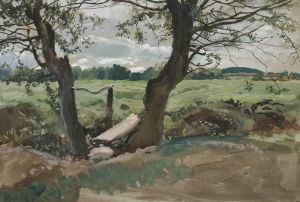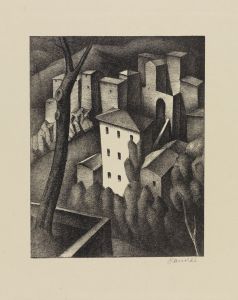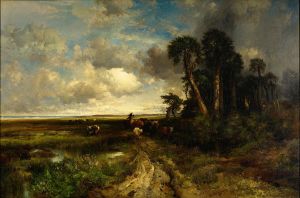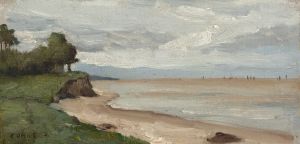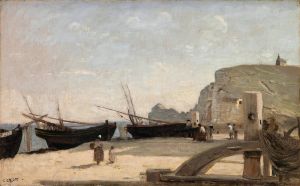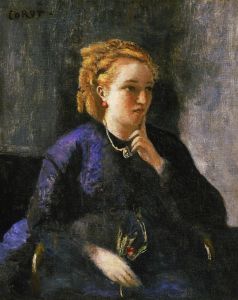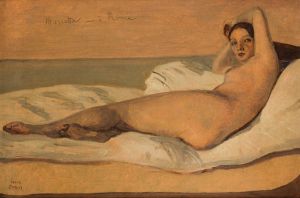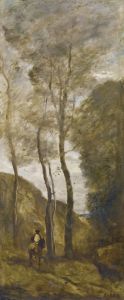
Forest On The Grace Coast In Honfleur
A hand-painted replica of Jean-Baptiste-Camille Corot’s masterpiece Forest On The Grace Coast In Honfleur, meticulously crafted by professional artists to capture the true essence of the original. Each piece is created with museum-quality canvas and rare mineral pigments, carefully painted by experienced artists with delicate brushstrokes and rich, layered colors to perfectly recreate the texture of the original artwork. Unlike machine-printed reproductions, this hand-painted version brings the painting to life, infused with the artist’s emotions and skill in every stroke. Whether for personal collection or home decoration, it instantly elevates the artistic atmosphere of any space.
Jean-Baptiste-Camille Corot was a pivotal figure in landscape painting during the 19th century, known for his contributions to the Barbizon School and as a precursor to the Impressionist movement. One of his works, "Forest On The Grace Coast In Honfleur," exemplifies his mastery in capturing the subtle interplay of light and nature, although specific details about this particular painting are not widely documented.
Corot was born in Paris in 1796 and developed an early interest in art, despite initially working in the family textile business. He eventually pursued painting full-time, studying under Achille-Etna Michallon and Jean-Victor Bertin, both of whom were influential in shaping his approach to landscape painting. Corot's style is characterized by a delicate balance between realism and idealism, often depicting serene natural scenes with a poetic sensibility.
The town of Honfleur, located in the Normandy region of France, was a popular destination for artists during the 19th century due to its picturesque landscapes and unique light. It is likely that Corot visited Honfleur, as he traveled extensively throughout France and Europe, seeking inspiration from various locales. His works often reflect a deep appreciation for the natural world, capturing the essence of a place through careful observation and a nuanced use of color and light.
Corot's technique involved working en plein air, or painting outdoors, which allowed him to observe the changing effects of light and atmosphere firsthand. This approach was somewhat revolutionary at the time and laid the groundwork for the Impressionists, who would later expand upon these ideas. Corot's paintings are noted for their soft, diffused light and harmonious compositions, qualities that are likely present in "Forest On The Grace Coast In Honfleur."
Throughout his career, Corot received critical acclaim and was awarded numerous honors, including the Legion of Honor in 1846. His influence extended beyond his lifetime, impacting not only the Impressionists but also later generations of artists. Corot's ability to convey the tranquility and beauty of the natural world continues to resonate with audiences today.
While specific information about "Forest On The Grace Coast In Honfleur" is limited, it can be appreciated within the broader context of Corot's oeuvre. His work remains a testament to the enduring power of landscape painting and its ability to evoke emotion and contemplation. Corot's legacy is preserved in major art institutions worldwide, where his paintings continue to be studied and admired for their technical skill and artistic vision.






